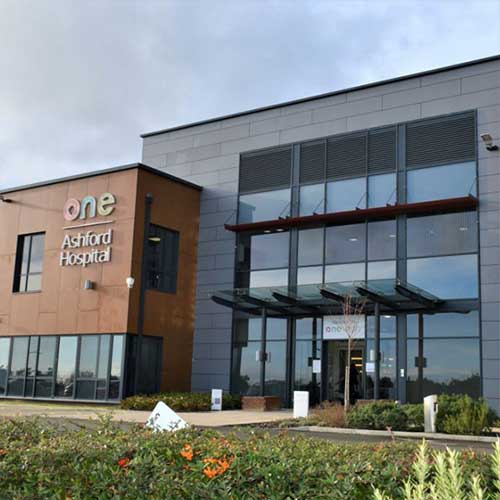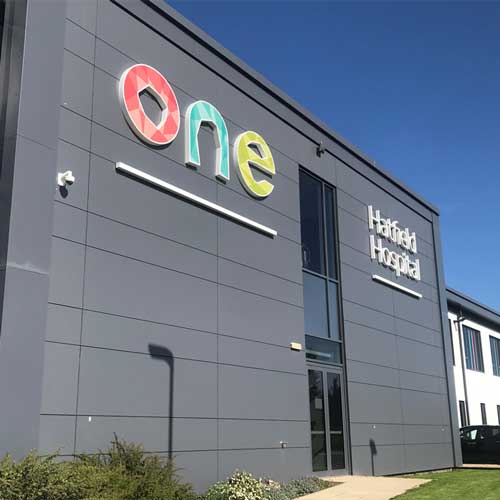ACL Reconstruction Surgery
The anterior cruciate ligament (ACL) is one of two ligaments that cross in the middle of the knee, connecting the femur (thighbone) to the tibia (shinbone). The role of the ACL is to stop the top of the shinbone from slipping forwards. When damaged, there is usually a partial or complete tear of the tissue. A mild injury may stretch the ligament but leave it intact. When the ligament is torn, the ends can suddenly ping apart, often resulting in reconstruction of the ligament. This is carried out with a graft, as unfortunately it is not possible to stitch them back to together.
Causes
ACL injuries are very common in sports people due to the high level of twisting and turning they put on their bodies. Typical sporting activities that see a large number of ACL injuries include gymnastics, football, basketball and tennis. Individuals employed in physical or manual professions such as construction workers, fire fighters and police officers are also prone to ACL injuries.
ACL injuries are more common in women than they are in men due to the differences of anatomy and muscle tension.
Symptoms of a Torn ACL
The most common symptom of a torn ACL is a loud popping sound or sensation, although this does not happen to everyone. The most common symptoms include:
Pain
You may not feel much pain if it is a minor injury, but you may feel soreness along your knee’s joint line. You may have trouble standing or find you are unable to continue with your activities.
Swelling
Rapid swelling is common within the first 24 hours. You can help to reduce the swelling by icing your knee and elevating it by propping it on a pillow.
Loss of range of motion
A loss of range of motion is common with an ACL injury. It is unlikely that you will be able to bend and flex your knee after the injury.
A feeling of instability
Your knee may feel wobbly with a sense of giving way, making it harder to walk. Your knee joint is likely to feel looser than it usually does.
Diagnosis of a Torn ACL
Your doctor will take a detailed history of how the injury occurred. It is important that you provide as much information as possible, such as the position of your body and leg position when the injury happened, along with the sequence of events leading up to, during and after the injury.
You will likely undergo a physical examination where you will be asked to lie on your back and your hips and/or knees at particular angles. If you doctor notices anything abnormal such as your bones moving incorrectly, you will be referred on for further tests. These can include Imaging such as:
X-ray
An X-ray is carried out to rule out any broken bones.
MRI or Ultrasound
An MRI scan or ultrasound will show both bone and soft tissue which should determine if you have damaged your ACL.
Arthroscopy
An arthroscopy is a surgical procedure that allows the Orthopaedic surgeon to look inside the joint. The surgeon will make small cuts into your skin and insert an arthroscope (camera) into the joint. This projects an image of the joint onto the screen in order to determine what type of injury you have, and whether or not it needs repairing.
Treatment
Treatment for a torn ACL will depend on the severity of your injury. If it is a minor injury, then resting and icing your knee in order to reduce the swelling and pain may be enough. Crutches can also help to keep the weight off your knee. Other treatment options include:
Medication
Anti-inflammatory drugs such as ibuprofen can help to reduce any swelling and relieve pain. Your doctor may recommend over the counter medications or prescribe something stronger. If these are not enough and your pain is more intense, your doctor may suggest a steroid injection into the knee.
Knee Brace
A knee brace is often recommended for people with a damaged ACL, as it will provide extra support when carrying out daily activities or playing sports.
During physical therapy sessions, you will be given a range of exercises to strengthen the muscles around your knee in order to regain full range of motion. You may be required to do them for a few weeks or months, depending on the severity of your injury. Your physiotherapist will recommend you continue to do your exercises at home.
Surgery
Deciding whether to have ACL reconstruction surgery can be a difficult decision as rehabilitation after surgery can last for a number of months, with full activity restricted for up to a year. ACL reconstruction surgery is recommended for individuals who wish to return to sporting activities that require lateral pivoting of the knee. Those who experience regular instability of the knee should also consider surgery.
ACL reconstruction surgery is usually carried out by arthroscopic (keyhole) surgery. A new ligament or graft is created to take the place of the torn ACL. The graft is usually a piece of tendon taken from another part of your body, such as the hamstring at the back of your thigh, or the patellar tendon that holds your kneecap in place. Surgical drills are inserted through other small incisions in the upper and lower leg bones where the bones come close together at the knee joint. These incisions form tunnels through which the graft can be anchored, and is secured with screws or staples. The surgeon will then close the incisions with stitches or tape. Your knee will then be bandaged and you will be taken to the recovery room.
ACL reconstruction surgery is carried out as a day case procedure and provided there are no complications, you will be allowed to go home at the end of the day.
Post-Operative Recovery
Following your ACL reconstruction surgery, you will be given a set of crutches to practice walking with, before being discharged from hospital. You may also be asked to wear a knee brace or splint to help protect the graft.
You will likely feel tired for several days post-surgery, and your knee will be swollen and bruised. You may also experience numbness around the incision on your knee. It is important to follow the instructions on how to control swelling and pain after surgery; this is likely to involve keeping your leg elevated, applying ice to your knee and resting it as much as possible. Most of the pain and swelling will disappear after a few days, and you should start to see some improvement in your knee.
Ensure you keep the area around your incision clean and dry to avoid infection. You will be instructed on when you can shower or bathe, when you should change your wound dressings and how to manage post-surgery care. If you notice any signs of infection, contact your doctor immediately.
Physical therapy will play an important role in the rehabilitation of your knee, as it will help to strengthen the muscles around it and improve flexibility. Your physiotherapist will show you a number of exercises to do; before you are discharged and once you are at home. It is important that you continue your physiotherapy plan in order to achieve the best possible results.
Rehabilitation following ACL reconstruction surgery can take several months, but most people are able to walk unaided by crutches about 2-3 weeks post-surgery. A full recovery can take up to 12 months, although athletes can usually return to sporting activities within 6-9 months, depending on the type of sport they play, and how well they are recovering.
Complications from ACL Reconstruction Surgery
ACL reconstruction surgery is generally a safe procedure, but with all invasive surgery, certain complications can sometimes arise. These include:
- Infection
- Muscle weakness from where your graft was taken
- Usual risk of anaesthesia
- Numbness in the surgical scar area
- Damage to the structures, nerves or blood vessels in and around the knee
- Blood clots in the leg
- Graft failure due to loosening, stretching, subsequent injury or scar tissue
- Permanent stiffness in the knee or reduced movement than you had prior to surgery
Need Help?
At One Ashford Hospital in Kent, we perform many different knee surgeries, including knee arthroscopies, minimally invasive knee replacements and revision of existing knee replacements. At One Ashford Hospital in Kent, we can book you in to see a specialist Orthopaedic knee surgeon for an initial consultation, usually within 48 hours.
One Ashford Hospital is well placed to see patients from Ashford, Maidstone, Canterbury, Folkestone, Dover and all surrounding areas.
You can use your private medical insurance or pay for your ACL Reconstruction Surgery treatment. We offer competitive, fixed price packages as well as the ability to spread the cost of your treatment over a number of months. If you are using your health insurance, please contact your insurer first for approval and let them know you’d like to be treated at One Ashford Hospital
Why One Ashford Hospital
- Access to leading Consultants within 48 hours*
- Spread the cost with finance**
- Competitive fixed-price packages
- Modern purpose-built hospital
- Private, spacious, ensuite rooms
- Specialist Physiotherapy and nursing teams
- Little waiting time for surgery
- Calm, dignified experience
*Dependent on Consultant availability
**Terms and conditions apply




 One Ashford
One Ashford One Hatfield
One Hatfield